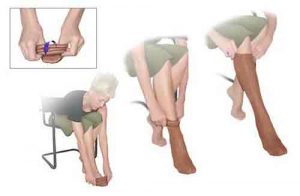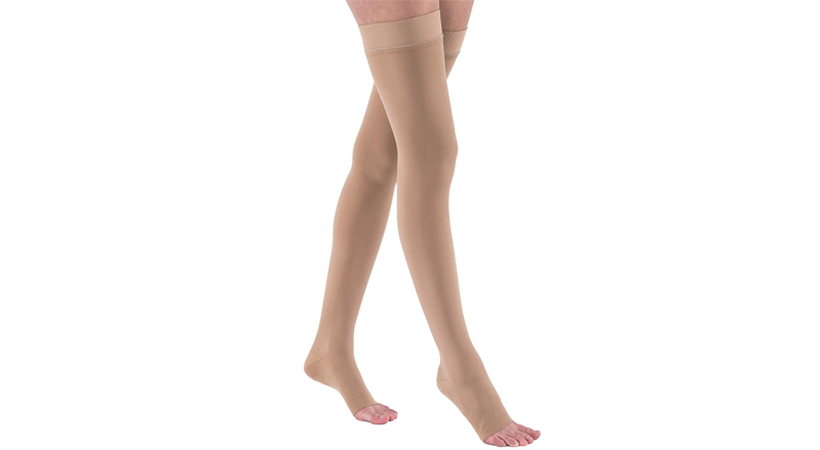Compression legwear stockings and socks help maintain circulatory system health, a non-invasive way to help your body better circulate your blood. Compression legwear also helps individuals combat the fatigue associated with tired aching legs and feet.
To make compression legwear stockings as user-friendly and comfortable as possible, follow these valuable tips and guidelines:
- Sizing – Make sure you have been properly fitted to assure an accurate fit, especially if you are experiencing any swelling, it’s very important to take leg (measurements) first thing in the morning after getting out of bed. Measure the fullest part of ankle and calf. Measurements are then compared to the sizing charts provide on website. Our certified fitting specialist are available to consult on sizing, style and compression level.





- Always put on your stockings – first thing in the morning as soon as you get up, before any swelling develops in your legs. If you wait and swelling or fluid builds up, it’s harder to get them on. Take off before bed-time.
- Make sure your skin is dry – do not wear lotions on your legs during the day, which can break down and weaken the yarn fibers. Put lotions on at night. After showering, towel dry thoroughly. Consider a thin layer of baby powder or corn starch on your legs to decrease friction when applying your stockings.
- Thigh High Stockings slip down – after hours of wearing, our oils and sweat glands from our skin make the silicone band start loosing away from our skin. You can rub the (silicone beads) with alcohol or with warm to hot water to make the beads more tacky.
- Wear disposal or rubber gloves – making it easier to grip the stockings when putting on and taking off. Also helps prevent rips and tears and fingernail damage. We provide a wonderful donning glove with beaded grippers if needed.
- Don’t bunch the stocking up – the most common reason for wrinkles or bunching up at the ankle or behind the knee is (too much fabric) the stocking is too long for you. Compression stockings or socks should run smoothly against your legs. Check the length of your leg to the stocking length sizing chart.
- Never bring the stocking to the bend of the knee – the area behind the knee is very tender…when putting on your knee-high stockings, make sure you bring them up about an inch below the bend of the knee to ensure proper fitting and comfort.
- Do not use fabric softeners on compression stockings – Do not is WoolLite, it contains bleach and it’s a fabric softener which can weaken the yarns. The “fatty” material in the softener attaches to the fabric blocks the pores, making the fibers stick together, breaking down the fibers for true compression results and reduces the ability of the fabric to manage moisture and breathe while wearing.
- Daily washing is necessary – to prolong the life of stockings and socks. Oils and salts from your skin can break down the fibers. Wash in cold / warm water with a detergent that does not contain bleach. Bleach will break down the fibers of your garment and shorten its useful life. Preferably washing every night after taking them off, but no less than at least every 3 days of wearing. It’s nice to have at least 2 pairs, you can alternate between wearing and washing.
- They’re too hard to get on!! A few (simple tips) making it easier to get compression stockings on and off.
- First, put your hand inside the stocking and grab the heel
- Turn the upper part of the stocking inside out to the heel
- Use your thumb and for fingers to grab each side of the heel
- Carefully slip your foot in and slide the stocking on up to the heel
- Gently use your palms of your hands to massage the remaining part of the stocking up to the knee
- Pull on the toe to free your toes for extra toe room

We hope we have helped with any questions or concerns when wearing medical compression stockings and compression legwear.
All information on this site is intended for educational and informational purposes only and is never a substitute for the advice of your physician or medical care provider.
Written by Gwen Marion our Certified Fitting Specialists November 3rd 2018



